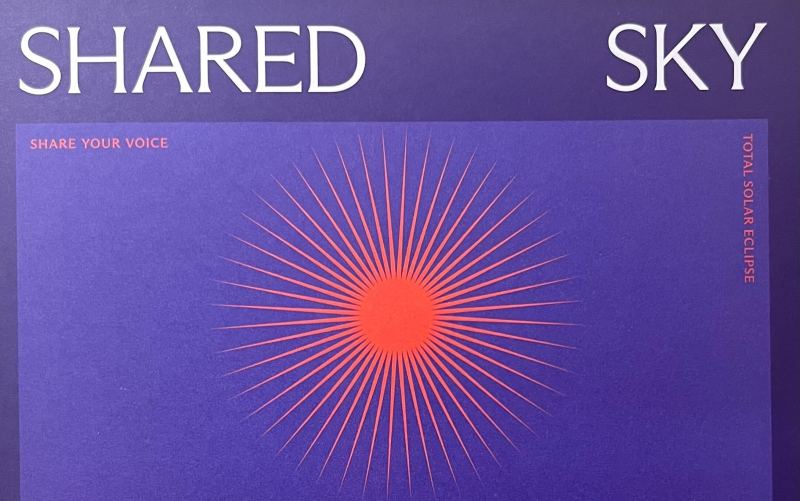Humanities and sciences don’t often mix. But Poets for Science, a project that explores science through poetry, does just that — encouraging collaboration between the two fields.
To celebrate both NASA’s Heliophysics Year and the solar eclipse that took place on April 8, Aimee A. Norton, Senior Research Scientist at the W. W. Hansen Experimental Physics Laboratory at Stanford decided to collaborate with Poets for Science.
The product of their collaboration is the Shared for Sky Project, which invited anyone on the path of the eclipse to reflect on their feelings and experiences in the form of poetry. Norton said that she realized that while there were many artworks and paintings featuring eclipses, there was not a lot of poetry regarding eclipses.
The idea for the project stemmed from one of Norton’s friends who knew that Norton was a poet and put forth the idea to use poetry as a medium for education in celebration of NASA’s Heliophysics Big Year, which is a global celebration of the Sun’s influence on Earth and the entire solar system. Norton, who knew about the Poets for Science project, decided to collaborate with them for the eclipse.
Norton said that her friend Hassler enthusiastically signed onto the project from the beginning. “Then within two months, we put it all together. It was really fun,” Norton said.
While the project stemmed out of Stanford’s own Hansen Lab, it wasn’t just meant for Stanford students. The project was a reflection of the interdisciplinary nature of Stanford and was a way to encourage students in STEM to reflect upon their science learnings.
“[Poetry] allows you to experience what you are learning in a different way… I remember taking classes in college and somebody would ask me, ‘What are you learning?’ and I had no idea,” Norton said. “Poetry is an emotional response to science and also brings people together.”
The pieces themselves are written by a wide array of people, in various geographical locations from Hexham, England to Spring Branch, Texas. The site features a map where one can tag their location and includes the eclipse’s line of totality.
Many poems were written by elementary school students describing little moments that made the experience special to them. One piece by Kadence Bland described how the eclipse was “The Day the Sunlight Drowns.” Another poem by Daniel Kreider described the phenomenon as a “Haunted Night.”
“It’s just so fun to hear about what people were doing during the eclipse,” Norton said.
The project shared a poem by her friend, Hassler, titled ‘Shared Sky’ as a model for inspiration. It also gave prompts that allowed people a launchpad for their pieces.
“I like the first line of the poem,” Norton said. “It’s like, ‘Dear Sun and Moon were used together.’ Like we are all along this path of totality standing there looking up, all of our fellow citizens wanting to see the same thing.”
Norton is working on compiling all of the pieces into a book, which she said could be used academically or for public enjoyment.
